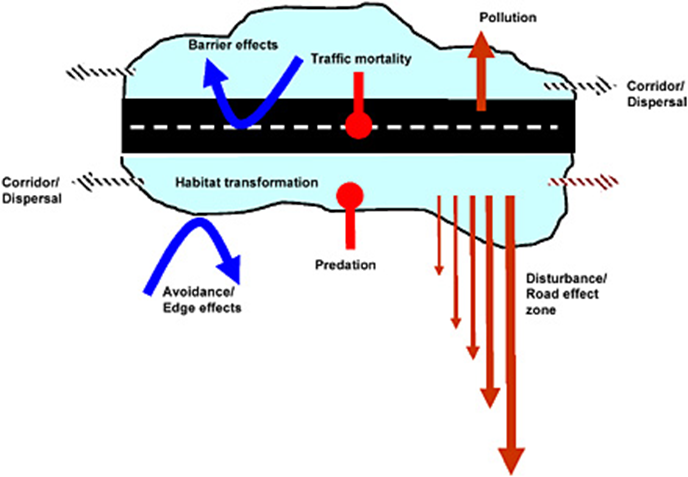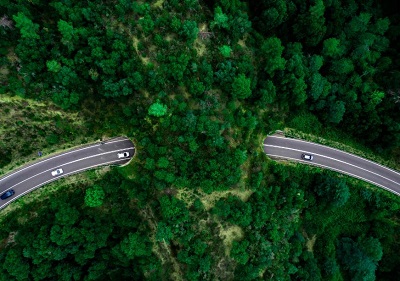Context:
With a focus on building a robust and sustainable national highway network, NHAI organised a day-long national workshop to discuss different aspects of environmental impact assessment, planning and mitigation for holistic National Highway development in New Delhi.
Balancing Connectivity and Forest Preservation
- Impact of Road Expansion on Forests : India’s extensive road network, covering over 6,600,000 kilometres, has had significant impacts on its forests. As a country rich in biodiversity, home to four global biodiversity hotspots and one of the 17 ‘megadiverse countries,’ India’s forests support 7-8 percent of all recorded fauna species. They also play a crucial role in carbon sequestration, soil fertility, disaster prevention, and maintaining groundwater levels. However, this invaluable resource is under threat from expanding road infrastructure.
- Ecosystem Services Provided by Forests : Forests are vital for various ecosystem services. They sequester carbon, fix nitrogen in the soil, and support a diverse range of species. Forests also act as natural buffers against floods and droughts, and prevent landslides in hilly regions. Larger, continuous forest areas provide these services more effectively than smaller, fragmented patches.
|
Road Infrastructure in India Road Network: India boasts the world's second-largest road network, spanning approximately 66.71 lakh km as of January 2024. Compared to India’s 5.13 km of road per 1,000 people, the US has over 20 km, and China has 3.6 km. Road Categories: ● National Highways: 1,46,145 km ● State Highways: 1,79,535 km ● Other Roads: 63,45,403 km Road Density: Varies by region. In 2019, Chandigarh had the highest road density at over 22.6 thousand km per 1,000 sq. km, while Kerala ranked first among states with 6.7 thousand km per 1,000 sq. km. Budget Allocation: The Union Ministry of Road Transport and Highways saw a 25% increase in its budget last year, raising it to ₹1.68 lakh crore for the 2024-25 fiscal year, benefiting the National Highways Authority of India (NHAI). Construction Momentum: India is set to add up to 13,000 km of roads through March 2025, maintaining an annual increase of 5-8%. Employment Generation: A 10% rise in road infrastructure could boost employment by 4.3% both directly and indirectly. Foreign Direct Investment (FDI): 100% FDI is permitted in roads and highways under the automatic route. Mobility: Road design and management affect accessibility, safety, and environmental impact. Road transport handles about 87% of passenger traffic and over 60% of freight in India. Achievements: Notable infrastructure milestones include the Atal Tunnel, the world’s longest highway tunnel, and the Chenab Bridge, the world’s highest railway bridge. |
Impact of Road Infrastructure
- Fragmentation of Forest Ecosystems: The introduction of roads creates linear gaps in forests, breaking them into smaller patches. This fragmentation reduces biodiversity and forest health, affecting species that avoid roads and disrupting migration patterns. Larger animals with extensive migration routes face increased risks from road crossings, including collisions and poaching, further impacting ecological balance.
- Pollution: Roads introduce various pollutants that harm wildlife. Tire debris can impact amphibian development, while deicing salts can reduce survival and alter behaviour. Vehicle oils and chemicals also pose environmental risks. Additionally, light and noise pollution from roads disrupt wildlife behaviours and navigation, and roads facilitate the spread of invasive species.
- Carbon Emissions: Roads and highways significantly contribute to greenhouse gas emissions, primarily carbon dioxide, which accelerates climate change. The transportation sector is responsible for about 14% of global emissions, with road transport being the largest contributor. Vehicle emissions also deteriorate air quality, leading to health issues such as respiratory problems, heart disease, and approximately 4.2 million deaths annually.
- Deforestation: Road and highway construction often leads to deforestation, causing habitat loss and biodiversity decline. This destruction disrupts ecosystem services such as clean air and water, pollination, and climate regulation. The loss of these services negatively impacts human health and well-being by diminishing the benefits provided by natural ecosystems.

Mitigating Environmental Damage
Phased Approach to Road Infrastructure
- Planning Phase: In the planning stage, prioritise road routes that avoid large forest patches. If avoidance is not feasible, conduct a thorough cost-benefit analysis considering environmental damage and economic impact. Implement conservation measures if roads must cross through forests. Design routes to minimise disruption to natural cycles, using features like culverts for water flow and additional drainage systems.
- Construction Phase: Minimise environmental damage during construction by adhering to specific timelines and waste management protocols. Ensure that mitigation measures are prioritised and actively monitor the road network for potential human-wildlife conflicts.
- Post-Construction Analysis: After construction, conduct active surveys to identify and address points of conflict or disruptions in animal corridors. Even with stringent measures, construction in wildlife zones remains risky, making the expansion of existing road networks a preferable alternative to minimise ecological harm.
Case Studies and Best Practices
Examples of Effective Mitigation
- Hoolongapar Gibbon Wildlife Sanctuary : In Assam, an iron canopy bridge was constructed over a railway track to aid the Western Hoolock Gibbon. However, the gibbons preferred a natural canopy bridge formed by trees. This highlights the importance of adapting solutions to the specific needs of the ecosystem.
- Borajan Podumoni Sanctuary : The gibbons showed a clear preference for a bamboo pole bridge, demonstrating the need for tailored, case-specific solutions.
Lessons from Historical Examples
- The US Dust Bowl as a Cautionary Tale : The US Dust Bowl serves as a historical example of the consequences of irresponsible land use and ecosystem destruction. India must learn from this to avoid similar pitfalls and balance infrastructure development with environmental preservation.
Conclusion
India has made significant strides in road development, contributing to economic and social progress. With its road network now the second largest in the world, the country faces the challenge of balancing road expansion with forest conservation. By adopting sustainable practices and innovative solutions, India has the potential to set a global example of integrating road connectivity with environmental preservation, demonstrating that development and conservation can coexist.
|
Probable Questions for UPSC Mains
|
Source: ORF India







